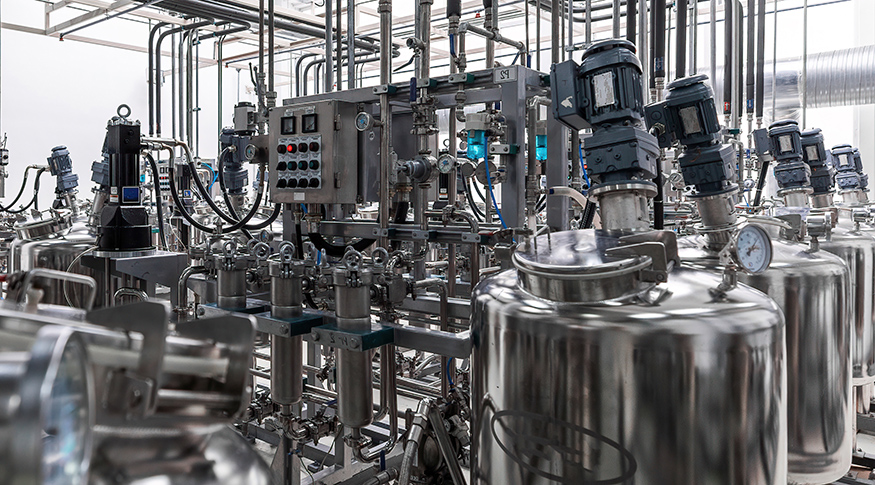IPP
Industrial inflation stays at -0.85% in October, third negative change in a row
November 29, 2022 09h00 AM | Last Updated: November 29, 2022 01h40 PM

The industrial prices fell 0.85% in October over September, the third negative change of the Producer Price Index (IPP). In spite of the negative figures registered between August and October, the IPP accumulates a rise of 5.04% in the year, far from that accumulated in the same period last year, when it hit 26.69% in the first ten month of the year. The cumulative indicator in the last 12 months has also been decelerating and reached 6.50%, the lowest figure in this type of comparison since June 2020, when it had been 6.38%. The information was released today, 29, by the IBGE.
“In October, 12 out of 24 sectors surveyed dropped and 12 of them, rose. Like in the previous months, the sectors that mostly influenced the monthly figure recorded negative changes, which helps to explain the new drop in the IPP,” notices Murilo Lemos Alvim, an IPP analyst.
The sector that mostly stood out was the chemical industry, with the highest change (-4.58%) and the biggest influence (-0.44 p.p.). Alvim explains that the result is explained by the bigger drop in the price of fertilizers and organic chemicals.
“The supply of fertilizers is growing, which is not followed by the demand, producing a drop in the prices. The increase in the supply occurs after a shortage period in the foreign market, due to the war between Russia and Ukraine. Despite the recent shortage, Brazil made an effort and imported a high volume and now has a comfortable stock,” analyzes Alvim.
The analyst explains that organic chemicals, like benzene and unsaturated propene, are petrochemical products benefited from the drop in the prices of the petroleum chain, like crude petroleum oil and naphtha. “Products that use petroleum and naphtha as inputs are having lower costs and, as a result, lower prices,” says the survey´s analyst.
Drop in the prices of commodities impacts mining industries
Two other sectors had a similar impact: Petroleum refining and biofuels and mining and quarrying industries, both of them contributing with 0.17 percentage points to the result. In mining and quarrying industries, the movement of the sector is related to the international prices of their three major commodities: iron ore, natural gas and crude petroleum oil. “The drop in iron ore and natural gas reduced the rise in the price of crude petroleum oil,” highlights Alvim.
On the other hand, the sector of petroleum refining and biofuels has also been dropping, due to the reduction in the prices of petroleum products. “This sector is also benefiting from the drop in crude oil, occurred between July and September. Yet, the prices of products like gasoline and diesel fuel began to be adjusted in the refineries, though not surpassing the average price of September. In October, the prices of diesel fuel, LPG and gasoline remained below those in the previous month,” completes Alvim.
Dairy products leverage drop in food prices
As the fourth sector to stand out, food industry has been impacted by the reduction in the prices of dairy products (2.14% in October), after intense rises in the prices in the first semester. “Between February and June, milk had its supply jeopardized by climate issues, which was even more jeopardized by the off-season. The supply is higher since August, registering the third consecutive month of drop, accumulating a reduction of 22.84% in the group of dairy products between August and October,” analyzes Alvim.
Still in food, the prices of poultry meat dropped due to a higher supply, as the sector is preparing for the increase in the demand in the holiday season. In contrast, soybean oil dropped due to the reduction in the demand.
Crisis in semiconductors rises prices of vehicles
The sector of vehicles stood out in the cumulative indicator in the year, with a change of 8.63%. That activity has been impacted for some months, due to the increase in the costs in its production chain, especially electronic components. “There is a global crisis in the semiconductor chain, rising the costs of vehicles. That sector has 28 consecutive months of rises, a period in which it accumulates a change of 33.00%,” highlights the IPP analyst.
Know more about the IPP
The Producer Price Index (IPP), whose scope is the mining and manufacturing industries, aims at measuring the average change of sale prices received by domestic producers of goods and services, as well as its evolution over time, signaling the short-term inflationary trends in Brazil. It is a key indicator for the macroeconomic follow up and, consequently, a valuable analytical instrument to decision takers, either public or private.
The survey investigates, in slightly more than 2,100 enterprises, the prices received by producers, free from tax, tariffs and freight, defined according the most usual commercial practices. Nearly 6,000 prices are collected monthly. Adopting the National Classification of Economic Activities (CNAE 2.0), the IPP produces indicators for 24 activities in the mining and manufacturing industries, besides reorganizing the same data into major economic categories, split into capital goods, intermediate goods and consumer goods (durable and semi-durable and non-durable).




















